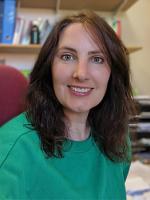Large-scale and systems modelling
Project Lead
Challenges
The most pressing societal challenges of the first half of the 21st century, including climate change, the biodiversity crisis and building a restorative economy, are systems challenges. To solve them requires understanding and quantification of how key systems respond to both global change and local responses. We are therefore developing tools for efficient computation at scale, estimation of large scale and systems model parameters, and the analysis of multiple models to test understanding and enable proper quantification of uncertainty.
Questions
Solutions
How do we develop robust, large scale simulation models?
We are developing statistical tools which will improve estimation of parameter values, quantification of uncertainty, model comparison and more efficient computation for high CPU models. We will use techniques such as Bayesian inference, systematic sensitivity analysis, calibration/history matching, and statistical emulation.
What is happening to Scottish soils?
We are exploring potential approaches to integrate the wealth of Scottish soil monitoring data from different spatial scales and data collection programs (e.g. systematic surveys compared with citizen science data) into ecological models.
What are the key drivers of biodiversity in Scotland?
We are combining land use models with dynamic vegetation models to investigate the effects of land management strategies and decision making behaviour on biodiversity response under climate change.
How feasible are circular economy interventions?
A circular economy is a model of society in which the life cycle of existing materials is extended as much as possible, leading to minimum waste. We are developing causal inference models from primary and secondary data and agent-based models which focus on understanding the effects of potential interventions and policy scenarios in facilitating behaviour change that accelerates green recovery towards a circular economy.
How can we manage antimicrobial resistance in agricultural systems?
We will use stochastic compartmental models to synthetize the processes of contamination, persistence, transmission, and exposure across the sections of the food chain. Depending on the nature of the empirical data available, we will adopt Bayesian or classical inference methods for parameter estimation and uncertainty.
Can we manage disease in livestock through changes to livestock trading?
We have developed novel generative models of livestock movements at national scale. We are using these to develop a digital twin of the Scottish cattle trade system and exploring: (i) potential disease control benefits of modifying how the trade needs of farms are met; (ii) interaction of trade with standard control measures; and (iii) how novel controls could be included in cattle health schemes.
Project Partners
Progress
2023 / 2024
We are continuing to develop advanced computer and statistical tools to help tackle real-world challenges in farming, food, and the environment. These tools are being used to improve our understanding of disease, climate change, and sustainable land management.
Highlights from the research include:
Genetics and disease resistance: New methods and software have been created to study how genetics influence disease resistance in animals and trees. These approaches work even with incomplete or irregular data, giving a clearer picture of how traits are passed on.
Flood prediction and uncertainty: The team is exploring how to make flood prediction models faster and more practical. By focusing on the most important steps, it’s possible to update forecasts more efficiently without losing accuracy an approach that is also being shared through international collaboration.
Soil monitoring and citizen science: Innovative methods are being tested to combine systematic surveys with unstructured data, such as observations from farmers or potentially from future citizen science projects. This could make soil erosion monitoring more powerful and wide-ranging.
Biodiversity and peatland management: A new prototype model has been developed that links pesticide use, land management decisions, and ecological change. Specific work on peatlands is helping to improve models at the species level, supporting long-term climate change mitigation.
Circular economy: The team has created a framework that integrates statistical and computer models to better understand behaviours such as recycling and reuse. This will help policymakers design more effective strategies to promote sustainable practices.
Antimicrobial resistance (AMR): Mechanistic models are being developed to explore how resistance in bacteria persists with or without antimicrobial use. These simulations help identify the processes driving AMR, supporting efforts to slow its spread.
Livestock trade and disease control: A national-scale model of Scottish cattle trading is being used to test schemes where farms are risk-scored based on disease testing. Results suggest that even targeting larger traders alone could reduce or even eradicate certain diseases across Scotland.
Together, this research is building the tools and evidence needed for smarter decisions on disease control, environmental management, and climate resilience.
2022 / 2023
This programme is developing powerful new tools to help tackle real-world environmental and agricultural challenges. By combining advanced computer modelling, statistics, and data integration, the work is providing fresh insights into how ecosystems, farming systems, and human decisions interact and how we can better manage risks such as climate change, biodiversity loss, and disease.
Highlights from the research include:
- Smarter modelling tools: New methods have been developed to make large-scale ecological models run faster and more efficiently. These include Bayesian approaches that help quantify uncertainty, compare models, and improve predictions. A new inference method has already been published, showing clear improvements over current standards.
- Understanding uncertainty: The team is building workflows to test how sensitive models are to different factors. This helps identify the most important drivers of change, giving researchers and policymakers more confidence in predictions.
- Peatland monitoring: New approaches have been designed for a low-cost peatland monitoring network across Scotland. By using water table loggers and accounting for differences in land type, climate, and small-scale variation, this work supports better greenhouse gas emissions monitoring.
- Biodiversity and land management: The EcoSISTEM model has been updated to include land use, helping to simulate how management decisions affect vegetation – with a first focus on peatlands under climate change.
- Circular economy: A major review of 70+ studies has highlighted the need for better ways to integrate causal inference techniques with computer simulations. This will improve how we understand behaviours around reuse, recycling, and sustainability.
- Food safety and antimicrobial resistance (AMR): New models are being used to explore how resistance in bacteria spreads, and how it might be controlled, with applications across several related projects.
- Livestock trading and disease: Using data from around 15,000 Scottish cattle farms, the team has built agent-based models that mimic real livestock movements. These are now being used to test realistic and innovative ways of controlling disease spread.
Together, these advances are creating the foundations for more reliable predictions, smarter decision-making, and stronger evidence to guide policies for farming, food safety, biodiversity, and climate action.
Related Projects
Sorry, no research matches your search - try broadening your filter by ticking the checkboxes.

